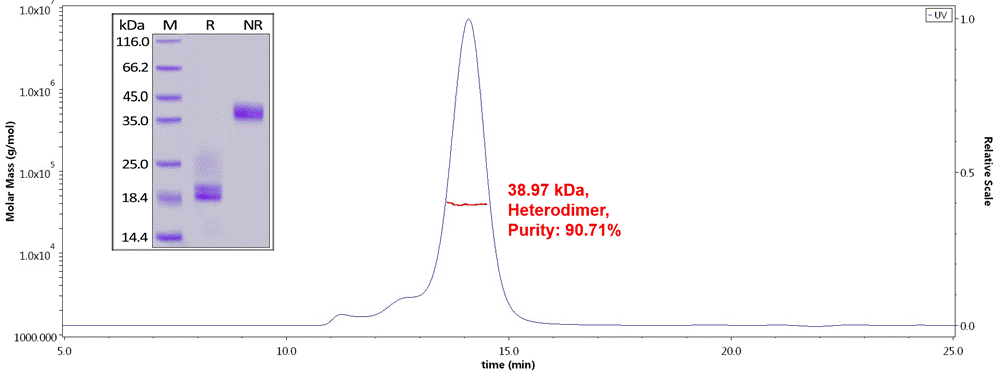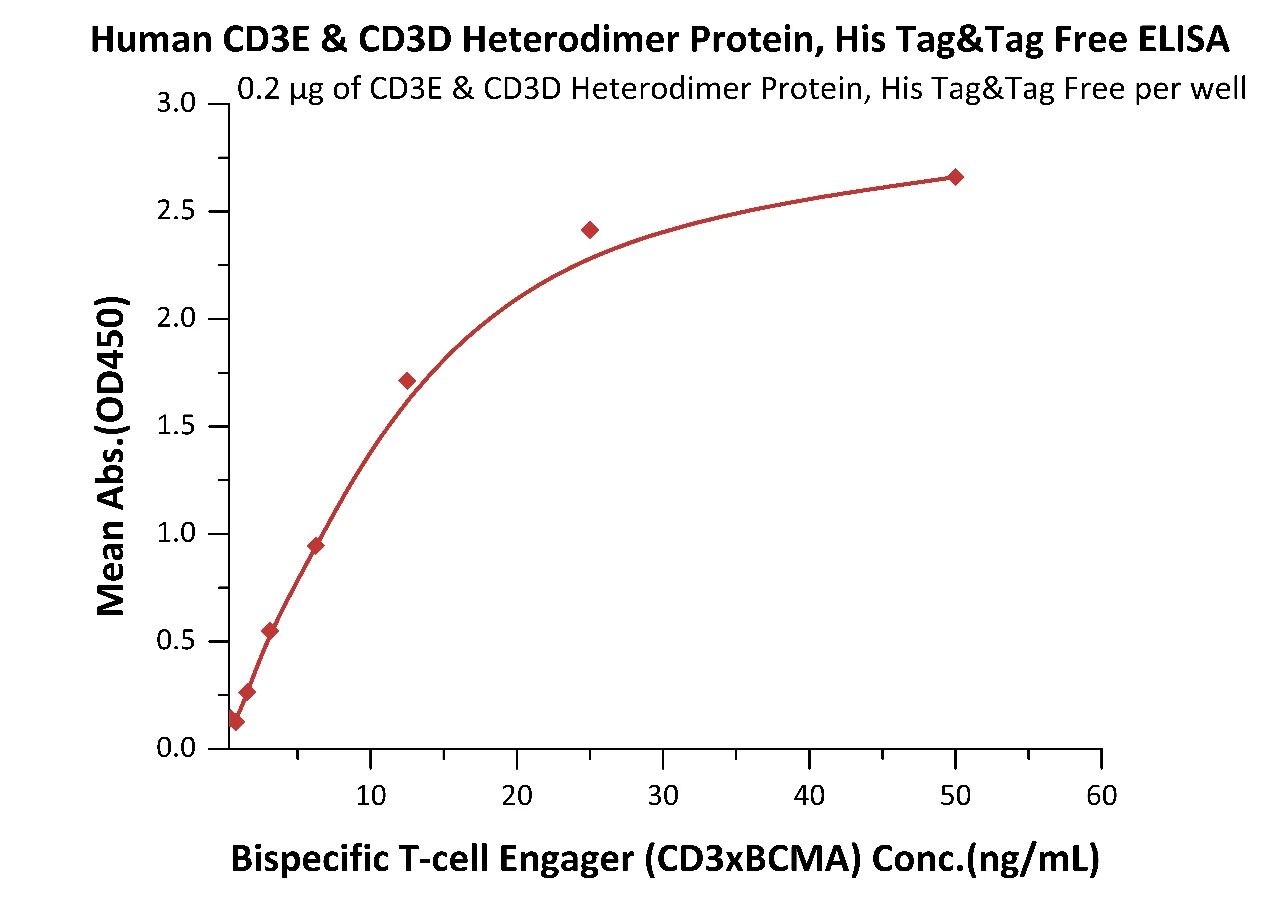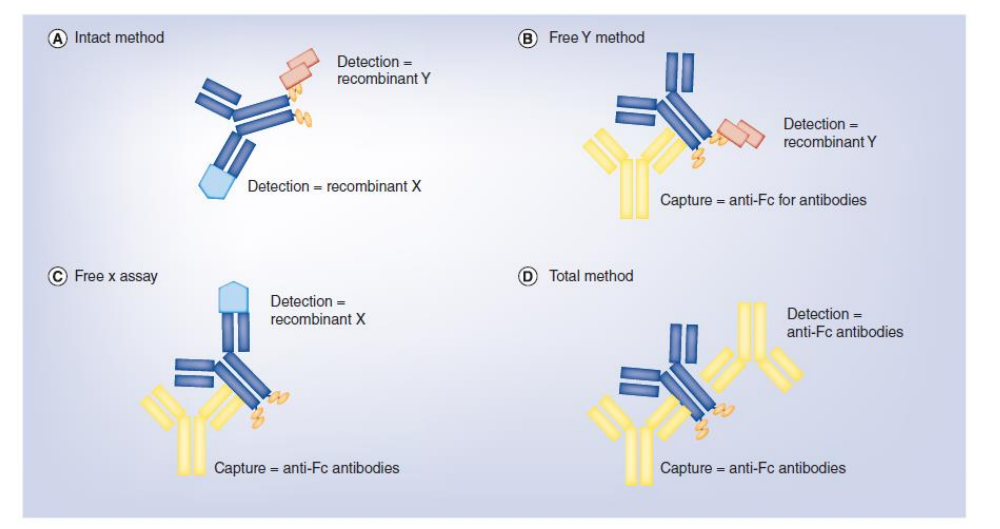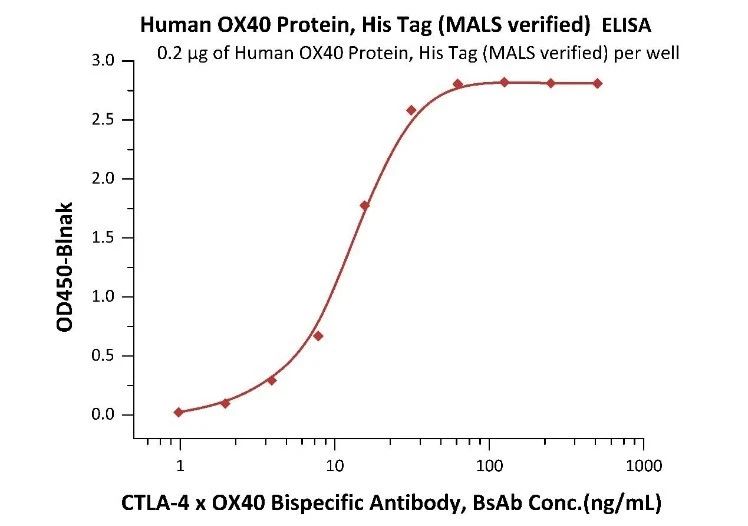
Leave message
Can’t find what you’re looking for?
Fill out this form to inquire about our custom protein services!
Inquire about our Custom Services >>


































 Limited Edition Golden Llama is here! Check out how you can get one.
Limited Edition Golden Llama is here! Check out how you can get one.  Limited Edition Golden Llama is here! Check out how you can get one.
Limited Edition Golden Llama is here! Check out how you can get one.
 Offering SPR-BLI Services - Proteins provided for free!
Offering SPR-BLI Services - Proteins provided for free! Get your ComboX free sample to test now!
Get your ComboX free sample to test now!
 Time Limited Offer: Welcome Gift for New Customers !
Time Limited Offer: Welcome Gift for New Customers !  Shipping Price Reduction for EU Regions
Shipping Price Reduction for EU Regions
Traditional monoclonal antibodies bind mono specifically to certain cells or proteins and exert biological activities. However, it is important to block multiple signaling pathways to avoid compensatory effects, especially for cancer and autoimmune treatments. Viruses are usually susceptible to mutations and easy to develop resistance.
So, it is common to use multi-targeting therapies to prevent the emergence of resistance. Therefore, monoclonal antibodies have limited efficacy under these circumstances. Advances in technology led to the development of bispecific antibodies (BsAb). Bispecific antibodies can bring out a synergy effect, making them one of the most popular drug research areas. Currently, there are hundreds of BsAb in clinical trials, and the number will continue to grow in the next few years.
There
are many formats of BsAb including IgG-like and non-IgG-like,
symmetric, and asymmetric. For these new molecules, the characterization
and pharmacokinetic (PK)/PD assessment are vital. Quality attributes
such as antigen specificity; affinity and on- and off-rates; avidity
(for bispecific antibodies that target two molecules on the same cell);
potency; process-related impurities such as aggregates, fragments, and
homodimers; stability; and half-life may affect pharmacology and should
be studied.[2]
As bispecific antibodies may present as a
mixture of biologically active and inactive forms, it is important to
identify the bispecific antibody form(s) that is most pharmacologically
relevant to PK/PD assessment and to develop validated assays that
measure the appropriate form(s) accordingly. Due to the synergetic
effect BsAb brings, the dosage is relatively low. Therefore, it requires
a more sensitive assay for analysis.
Case study
Antigen-antibody affinity
Case 1 antigen-antibody affinity
It
is critical to choose the building blocks of BsAb with the best binding
affinity, stability, and functionality based on the binding affinities
and kinetics, especially when dual-targeting the effector cell and the
target cell. Targeting CD3 may over-activate T cells or other immune
cells, resulting in excessive cytokines release and leading to biosafety
issues. Therefore, it is critical to reduce the binding of the Fc
fragment of CD3-targeting antibodies and Fc gamma receptors, thereby
reducing the side effects.
ACROBiosystems developed a 1:1 heterodimer
CD3E&CD3D recombinant protein to support the potential
applications. We verified the purity and bioactivity of the
CD3E&CD3D protein using the bispecific antibody (AMG420) through
SPR, ELISA, and SDS-PAGE.
MALS verification:

Human CD3E&CD3D Heterodimer Protein, His Tag&Tag Free (Cat. No. CDD-H52W1) on SDS-PAGE under reducing (R) and non-reducing(NR)condition. The purity of the protein is more than 85% and around 35-43 kDa verified by SEC-MALS.
SPR verification:

Bispecific T-cell Engager (CD3 X BCMA, AMG420) immobilized on CM5 Chip can bind Human
CD3E&CD3D Heterodimer Protein, His Tag & Tag Free (Cat. No. CDD-H52W1) with an affinity constant of 31.8 nM as determined in a SPR assay (Biacore T200).
ELISA Assay verification:

Immobilized Human CD3E&CD3D Heterodimer Protein, His Tag&Tag Free (Cat. No. CDD-H52W1)
at 2 μg/mL, add increasing concentrations of Bispecific T cell Engager
(CD3 X BCMA) and then add Biotinylated BCMA Fc,Avitag (Cat. No.
BC7-H82F0) at 0.2 μg/mL. Detection was performed using HRP-conjugated
streptavidin with sensitivity of 4 ng/mL.
Case 2 FcRn-antibody affinity
IgG like BsAb maintains the same bioactivity and PK/PD characteristics as the traditional IgG monoclonal antibody. We verified the affinity between IgG like BsAb and Fc gamma receptors using Biacore.

PK assessment
The preclinical and clinical pharmacology studies for a BsAb, such as the PK assessment, are usually complex due to the interference of anti-drug antibodies and free target proteins in biological samples.
Intact Assay:
For the intact BsAb molecule, all their functional domains are not blocked by ADA or free target proteins. The intact assay is developed to evaluate the intact BsAb molecule. Recombinant protein targets or competitive anti-idiotypic antibodies can be utilized for this kind of assay development. The intact assay has advantages such as high specificity, small matrix effect, and high sensitivity.
Free A/B Assay:
Free A/B assay can be developed to study one of the functional domains. This method can be used to evaluate the exposure and activity of the specific functional domain as well as evaluate the interference of ADA and free target proteins. We can use the specific target protein and detection antibody for assay development. Due to the matrix effect and steric hindrance in clinical PK study, the sensitivity is relatively low.
Total Assay:
The total assay will not be interfered by ADA and free target proteins. The method can be developed based on the structural domain of the BsAb molecule using non-competitive ADA and detection antibodies, which is helpful for toxicity evaluation.

Case 3
Based
on the intact assay method, we established an ELISA method for free
CTLA-4 x OX40 BsAb measurement using MALS verified OX40 protein and
biotin-labeled CTLA-4 protein.

Immobilized Human OX40 Protein, His Tag (MALS verified) (Cat. No. OX0-H5224) at 2 μg/mL, add increasing concentrations of CTLA-4 x OX40 bispecific antibody in 50% Human serum and then add Biotinylated Human CTLA-4, Fc,Avitag (Cat. No. CT4-H82F3) at 0.2 μg/mL. Detection was performed using HRP-conjugated streptavidin with sensitivity of 4 ng/mL (Intact assay).
Methodology validation:

When developing a PK method, we have to consider all the advantages and disadvantages of different detection methods. Based on the requirement of sensitivity, we make the most appropriate choices and establish a satisfying method through optimizations.
Based on the Biacore T200/8K platform and ForteBio Octet platform, ACROBiosystems provides SPR /BLI analytical services to our valued customers. The SPR/BLI analytical services include antibody screening, antibody pairing/group, kinetic analysis, and interaction measurement.
ACROBiosystems’s experts are here to help.
Call us at: +1 800-810-0816 or email at:
services@acrobiosystems.com.
This web search service is supported by Google Inc.








